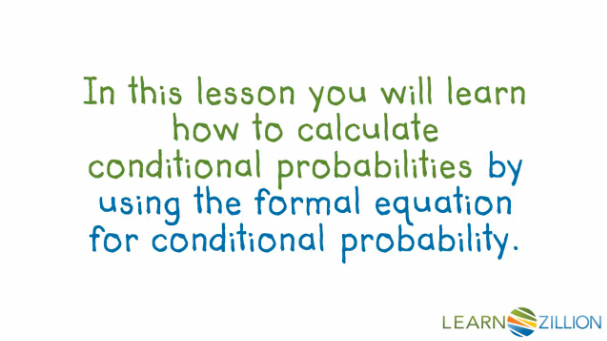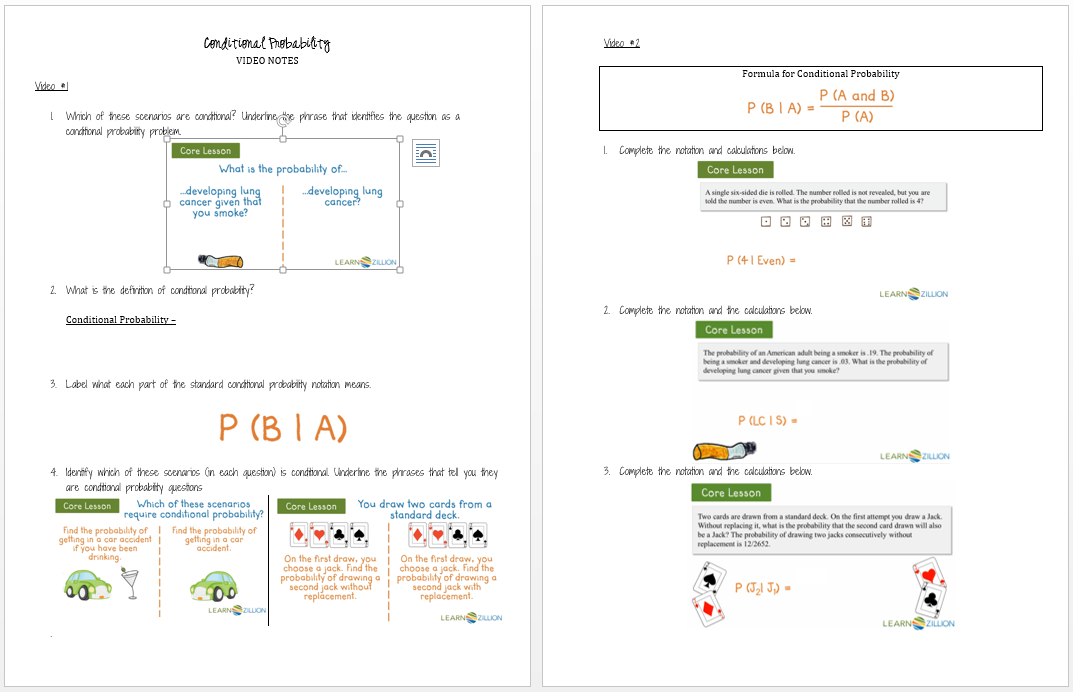Having taught the "Addition Rule" for three years now to all of our Algebra II students, I knew that my kids always got bogged down with the notation and formulas. So, I threw that out and decided to teach it without the formulas this year (at least to start). When kids entered the door, they received a eye card and a pet card (pet cards are from lesson 2). We started talking about the probability that a randomly selected student had a blue or green eye. I asked students who had blue eyes to hold up their cards and wrote the probability (in the set I'm providing it's 6/20). Then, I asked for students who had green eyes to hold them up and wrote down the probability (in the set it's 2/20). We added the fractions and got 8/20. To check our answer, I asked all students who had a blue or green eye to hold them up again. The kids saw that the answer was indeed 8/20.
Then, we picked up our pet cards. I asked kids what the probability was that a randomly selected student has a dog or female pet. The key here is to make sure the deck is stacked in such a way that yields a highly suspicious probability. (For this first example, we want less blue cats and more pink dogs) We went through the same exercise. I asked students who had dogs to hold up their cards. We counted and wrote that probability on the board/notes. This varies, since I don't use all the cards in the deck (my classes are usually a couple of students smaller than the 24 in the deck). Then, I asked students who had female "pink" pets to hold up their cards, counted them, wrote the probability on the board/notes. I always choose enough pink dogs and few enough blue cats so that the probability is suspicious - either 1 or over 1 is best to make kids suspicious. I've always had a key say... "Hey... That can't be right." We have a discussion about why that can't be right (probability distributions add to 1, or - if you got 100% probability - that everybody in the room would have to have a female pet or dog. I then point out the student in the corner with the blue cat. Regardless, I turn to a student with a pink dog and ask how many times they raised their hand/were counted. They understand that they were double counted, and thus we need to subtract the probability of the intersection - or, to them - the probability of pink cats. Kids with pink cats hold up their cards, we count, and subtract that probability on the board/notes. We get a final answer. Then, I ask kids who have a female pet or a dog to hold up their card and count to check our work. It works beautifully and kids don't struggle. They get it! My favorite moment is seeing the light bulbs during the "pink dog" exchange.
I've tried to do this activity before with kids' shirt colors or hair colors; it just doesn't work as well for me.
I'm attaching my materials here for your use. If you choose to use them in your class, please drop me a quick note of how it went, what you'd change, etc. I'd appreciate the feedback.
Addition Rule Notes (Click on Image for Google Drive File):
Addition Rule Smart Notebook File (Click on Image for Download):
Deck of Animal Cards (Click on Image for Google Drive File):
Addition Rule Practice Problems (Click on Image for Google Drive File):
* One of these questions prompts kids to use their "Playing Card Crib Sheet" because my kids don't know cards well at all. I just give them a printout from Wikipedia.
























